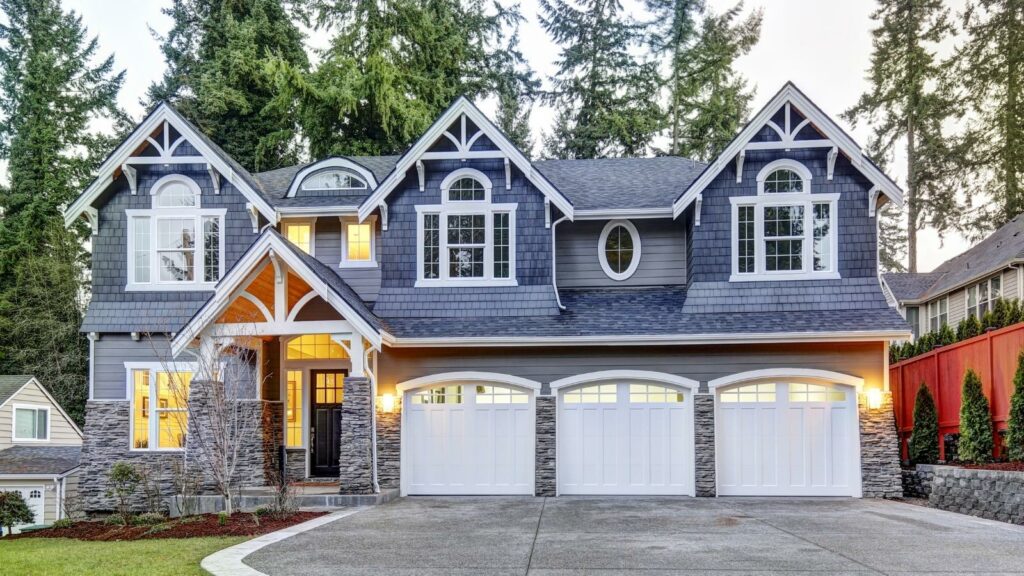If you’re on the brink of selling your home, you’re about to make one of the most significant financial transactions of your life. But here’s a question for you: Are you leaving money on the table? We’re not just talking pocket change; we’re talking about tens of thousands of dollars that could be yours with the right strategies. In today’s hyper-competitive real estate market, small improvements can yield huge profits. This comprehensive guide lays out proven ways to elevate your home’s worth, ensuring you get top dollar when you hand over the keys. Are you ready to unlock the hidden profits in your home? Let’s dive in.

Prioritize Maintenance and Leverage a Pre-Inspection to Elevate Your Home's Value
To increase your home’s market value and appeal, you cannot overstate the importance of meticulous maintenance and strategic pre-inspections. Overlooked repairs or neglected features can signal to potential buyers that your property might have more serious, hidden issues. Whether it’s replacing broken tiles or fixing leaky faucets, these tasks not only make your home more visually pleasing but also add tangible value. But there’s another tool in your arsenal that’s often underutilized: the pre-inspection.
Essential Maintenance and Repairs
Replace broken or missing tiles: An incomplete or damaged floor can deter buyers. Make sure all your tiles are intact and consider updating them if they look dated.
Patch holes in the walls: Holes or dents give the impression of a neglected home. Filling them in and smoothing the surface prepares your home for a fresh coat of paint.
Paint over scuffed or peeling areas: Fresh paint makes your home look new, clean, and ready for new occupants.
Fix leaky faucets: Leaks not only waste water but also suggest poor maintenance. A quick repair can resolve this issue.
Address any electrical issues: Faulty wiring can be a deal-breaker. Ensure all electrical elements are up to code.
Clean or replace HVAC filters: A well-maintained HVAC system implies a well-maintained home, and buyers take note of that.
Refurbish worn-out fixtures: From doorknobs to light fixtures, the small details make a difference. Update these elements to modernize your home’s appearance.
Update aged appliances: Old appliances can be an eyesore and a turn-off. Investing in modern, energy-efficient appliances can significantly up your home’s appeal.
Re-caulk bathtubs and sinks: Old or moldy caulking can give a grimy impression. Fresh caulk is both visually pleasing and functional.
Seal cracks in windows and doors: Cracks can indicate poor insulation, upping the new owner’s potential energy costs. Sealing them makes the home more energy-efficient and appealing.
Oil squeaky hinges: Noise can be a subtle psychological irritant. A little lubrication can make doors and cabinets function smoothly, contributing to a more peaceful home environment.
Treat any signs of mold or water damage: These issues can scare off buyers. Make the necessary repairs to present a healthy living environment.
Leverage a Pre-Inspection
Conducting a pre-inspection provides you with an edge in the competitive real estate market. Unlike a buyer-initiated inspection, which occurs after an offer has been made and accepted, a pre-inspection happens before you list your home. This proactive step allows you to identify and address any issues that could affect the selling process. By taking this approach, you project transparency and gain the confidence of potential buyers.
Using the pre-inspection as a marketing tool can also be incredibly effective. Disclose the repairs or improvements you’ve made based on the inspection, either in your property listing or during home viewings. This disclosure can strengthen your negotiating position, quicken the sale, and increase the final selling price.
By meticulously maintaining your property and leveraging the insights gained from a pre-inspection, you significantly enhance the marketability of your home. These proactive steps will likely attract more interest, facilitate quicker sales, and command a higher selling price.
Master the Art of Home Staging to Boost Market Appeal
Before you even think about staging, cleanliness is paramount. A sparkling, clean home forms the foundation for all your staging efforts. Dusty shelves, grimy windows, or stained carpets can distract buyers and reduce the positive impression they have of your home, regardless of how well you’ve staged it. A deep clean will not only enhance the visual appeal but also signal to buyers that the house has been well cared for. Remember, cleanliness goes beyond what’s immediately visible; don’t neglect areas like the inside of cabinets, under sinks, or even your home’s exterior.
Staging your home is like setting the stage for a performance; it’s your opportunity to spotlight the best features and woo potential buyers. However, unlike simply decorating for your taste, staging considers the preferences and needs of a wider audience. The aim is to create an inviting yet neutral space where people can easily envision their own lives unfolding. Properly staged homes often sell faster and can even command a higher asking price because they present an aspirational lifestyle that buyers find irresistible.
Effective Home Staging Strategies
Declutter living spaces: A clutter-free home looks bigger and more inviting. Remove personal items and unnecessary furniture to open up space.
Depersonalize your interiors: Buyers should be able to picture themselves in your home. Store away family photos and any overly personal decorations to create a neutral canvas.
Update home decor: Outdated or worn-out furnishings can distract buyers. Consider renting modern furniture and accessories to update the look of your home.
Improve lighting: Good lighting enhances the mood and makes your home appear more spacious. Use a mix of natural and artificial light sources for the best effect.
Neutralize color schemes: Bold colors may not appeal to everyone. Stick to neutral tones like beige, grey, or off-white for walls and main furniture pieces.
Set the dining table: A set table can help buyers visualize entertaining in the space. Keep it simple but elegant to appeal to a broad range of tastes.
When you combine staging with diligent maintenance and a strategic pre-inspection, you create a comprehensive approach to elevating your home in a competitive market.
Make a Lasting First Impression: The Crucial Role of Curb Appeal
Curb appeal doesn’t just start when a prospective buyer pulls up to your property; it starts the moment they scroll through listings online. The exterior of your home acts as the cover of a book, convincing buyers to read the rest of the story. A well-maintained, attractive exterior can set the tone for the entire viewing experience. What’s more, when buyers pull up to your house, they should be swept away with a sense of charm and enthusiasm, already picturing themselves as the new owners before they even step inside. In today’s digital age, if your home doesn’t catch their eye immediately in online photos, chances are they won’t take the next step to see it in person.
Here’s how to harness the power of curb appeal for online and in-person impact
Mow the lawn and edge along sidewalks: A crisp, manicured lawn appears well-cared-for in photos and in person, setting a positive tone for the entire viewing.
Plant seasonal flowers or shrubs: Splashes of color or greenery can capture attention in listing photos and create an inviting atmosphere for in-person visits.
Repaint or clean the front door: A bright, clean front door can be a striking focal point in listing photos and offers a warm welcome to visitors.
Upgrade outdoor lighting: Effective lighting highlights your home’s best features in evening photos and creates a welcoming ambiance for late-day showings.
Add or update house numbers: Easy-to-read, stylish numbers help buyers find your property and indicate attention to detail, both in photos and in reality.
Power wash driveways and walkways: Clean driveways and paths look far better in photos and demonstrate meticulous care when buyers visit in person.
Install window boxes or shutters: These accents can add charm and character, enhancing both online listing photos and the in-person aesthetic.
Refresh mailboxes or outdoor fixtures: Small but noticeable upgrades like these can offer a fresh, modern look, both online and when buyers arrive at your property.
Tend to fences and gates: A well-maintained fence can add to the appeal of your listing photos and provide a sense of security during in-person visits.
It’s crucial for buyers to feel an immediate connection with your property, a “love at first sight” experience that begins online and intensifies when they pull up to your well-groomed exterior. This emotional engagement is a powerful marketing tool, and when paired with interior staging, meticulous maintenance, and a pre-inspection strategy, it creates a comprehensive approach to maximizing your home’s market potential.
Nail the Right Price: How Overpricing Can Diminish Your Home's Value
When it comes to selling your home, setting the right price is critical. Pricing your home a bit higher gives you room for negotiation, but this tactic can backfire dramatically. Overpricing your home can actually reduce its perceived value in the eyes of potential buyers. The longer a high-priced home sits on the market, the more “stale” it becomes. Buyers may start to wonder what’s wrong with the property, assuming that if it’s not selling, there must be hidden issues. This perception can become a self-fulfilling prophecy, resulting in lower offers or causing your home to languish on the market indefinitely.
Pricing Strategies to Avoid Depreciation in Perceived Value
Conduct a comprehensive market analysis: Get a clear understanding of the current market conditions and how your home compares to similar properties.
Seek professional valuation: While online estimators provide a rough idea, nothing replaces a professional appraisal for accuracy.
Factor in unique selling points: Does your home have features that set it apart? Make sure to consider these when setting your price, but don’t let them inflate the cost unrealistically.
Avoid round numbers: Pricing at, for instance, $399,900 instead of $400,000 can make your home appear more affordable and attract a broader range of buyers.
Monitor time on the market: If your home isn’t attracting offers, it may be time to adjust the price. Be proactive rather than waiting for it to become a ‘stale listing.’
React to market feedback: If you’re getting a lot of viewings but no offers, this could be a sign that buyers find the home overpriced. Take this feedback seriously and consider a price adjustment.
Remember, an overpriced home not only discourages potential buyers but may also lead to a lower selling price in the long run. Accurate and strategic pricing engages the emotions of the buyers, making them less likely to seek concessions and more likely to make competitive offers. When you combine intelligent pricing with compelling staging, meticulous maintenance, strategic pre-inspections, and curb appeal that sweeps buyers off their feet, you’re positioning your home for both maximum appeal and optimal market value.
Choose the Right Agent: Your Key to Maximizing Home Value
Selecting the right real estate agent is not a decision to take lightly. The agent you choose to work with will be your partner in one of the most significant financial transactions of your life. An experienced and competent agent will provide invaluable guidance on all aspects of selling your home, from setting the right price to enhancing curb appeal and staging the interiors. The right agent understands market trends, can interpret data, and has the negotiation skills to get you the best price. In essence, a good agent functions as a project manager who coordinates each crucial element that goes into maximizing your home’s value and appeal.
How a Skilled Agent Advises on Key Selling Points
Market Analysis and Pricing: An adept agent performs a comprehensive market analysis, considers comparable properties, and sets an optimal price for your home, thereby helping you avoid the pitfalls of overpricing. Their experience helps avoid the pitfalls of overpricing.
Staging and Interior Presentation: A skilled agent knows how staging can make or break a sale. They can offer recommendations or even bring in professionals to enhance your home’s interior.
Maintenance and Repairs: Your agent will identify areas that require attention and could recommend contractors to carry out necessary repairs, ensuring your home is market-ready.
Pre-Inspections: A knowledgeable agent understands the value of a pre-inspection and can guide you through the process, using it as a marketing tool to build buyer confidence.
Curb Appeal: Your agent knows that first impressions matter, both online and in person. They can guide you on how to make the exterior of your home as appealing as the interior.
Negotiation: When it comes to receiving offers, a seasoned agent can help you navigate negotiations so that you emerge with the best possible terms and price.
In a crowded real estate market, working with the right agent can set you apart. When your agent brings to the table a full suite of skills, including a deep understanding of market dynamics, expertise in staging and presentation, and top-notch negotiation skills, you are in a much stronger position. This multi-faceted support, coupled with strategic pricing, compelling curb appeal, and meticulous maintenance, will not only make your home stand out but also optimize its market value.
Ready to Elevate Your Home's Market Value? Let's Get Started!
You’ve invested a lot in your home, and it’s only fitting that you get the maximum return on that investment when it’s time to sell. From setting the right price and enhancing curb appeal to conducting pre-inspections and working with a skilled real estate agent, each of these factors plays a crucial role in maximizing your home’s market value. The journey to a successful home sale may seem overwhelming, but remember, you don’t have to go it alone. Contact us when you’re ready to take the next step and let’s work together to get you the best possible price for your home.

